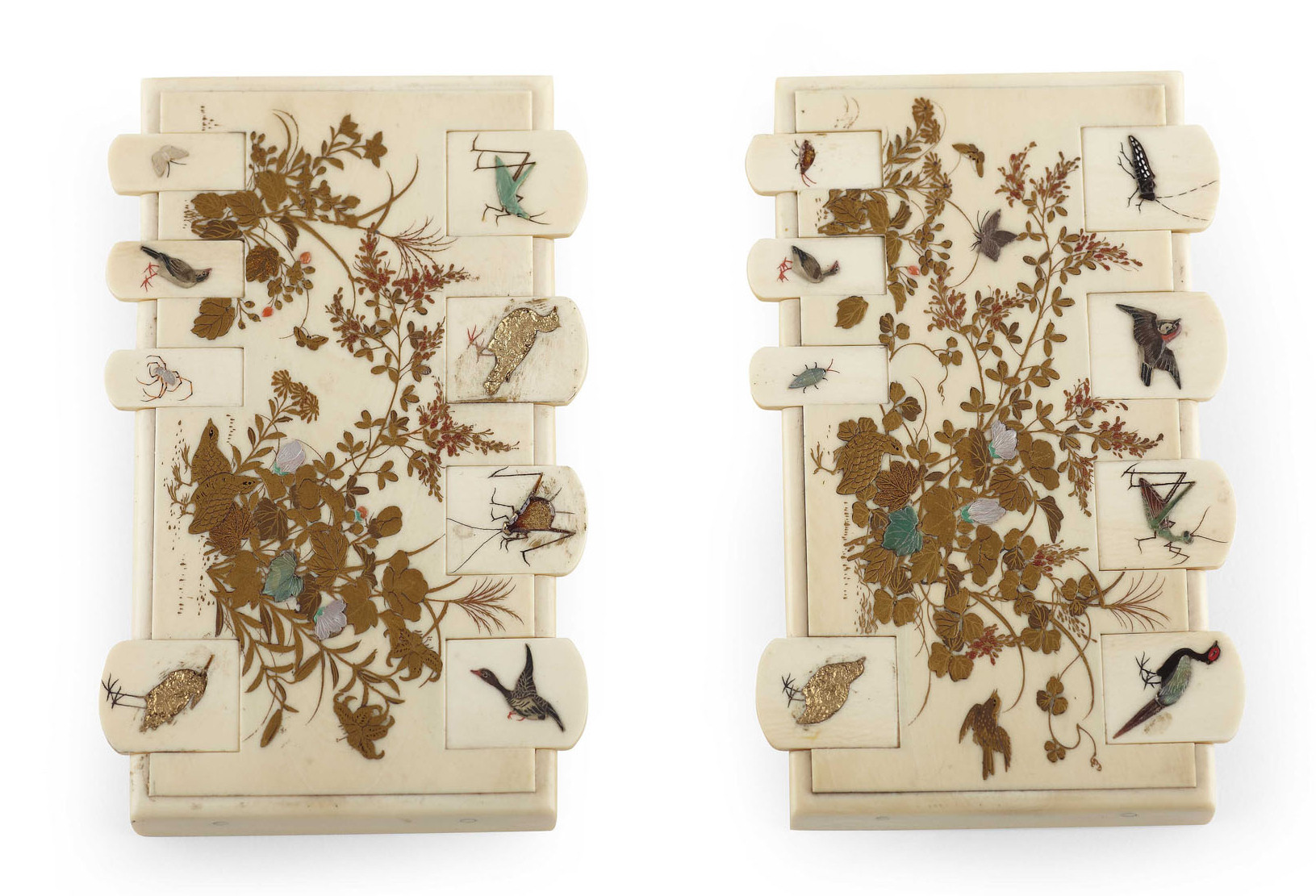ROYAL INTEREST PAIR OF JAPANESE SHIBAYAMA WHIST MARKERS
LATE 19TH CENTURY
£1,150
Auction: 9 December 2009 at 11:00 GMT
Description
in a leather case inscribed with gilt Prince of Wales feathers and 'Christmas 1894', the markers with pegs each decorated with a different bird or insect in mother of pearl and hardstones, the body decorated in gilt and hardstones with partridges amongst flowers and foliage
Dimensions
each marker 6cm wide, 9.5cm high
Footnote
Note: The box containing these whist markers is inscribed with the Prince of Wales feathers which suggests that it was either a gift to or from the Prince of Wales in 1894.
Albert Edward, Prince of Wales (later Edward VII) was a keen card player and gambler. He is known to have a baccarat marker inscribed with the Prince of Wales feathers. In 1891 he was caught up in the Tranby Croft affair, when it was revealed that he had played an illegal game of Baccarat for money the previous year.
On 8th September 1890, Sir William Gordon-Cumming and the Prince were among the guests at a house party at Tranby Croft, the country house of shipbuilder Sir Arthur Wilson. That evening the guests played baccarat, a gambling game which was illegal in England but was a favourite of the Prince. During the evening, several players observed Sir William apparently cheating by altering the amount of the bets he had on the table after he won or lost a hand. Sir William denied any wrong-doing but finally agreed to sign a pledge that he would never play cards again in exchange for an agreement that the matter would be kept secret. It did not, however, remain secret and Sir William was shunned by society. He decided to take his accusers to court and the Prince of Wales was called as a witness and was forced to admit to his participation in the evening's events. Sir William lost the case.
The Prince of Wales continued to gamble, but more discreetly, giving up baccarat and taking up whist instead.

